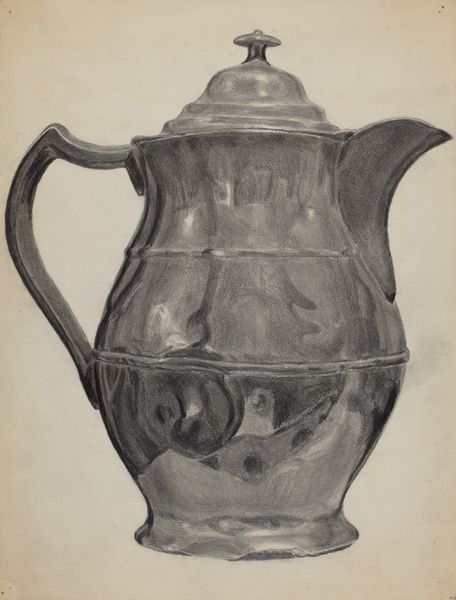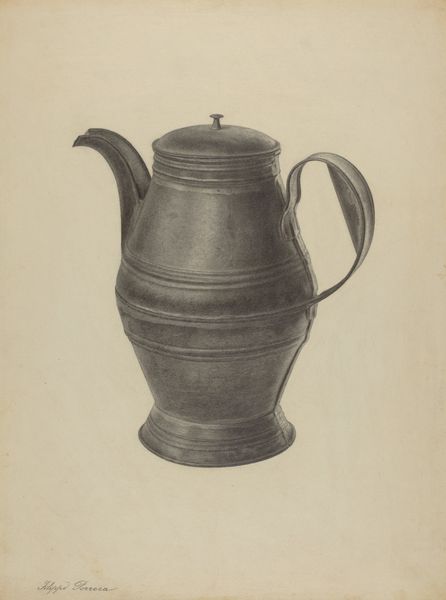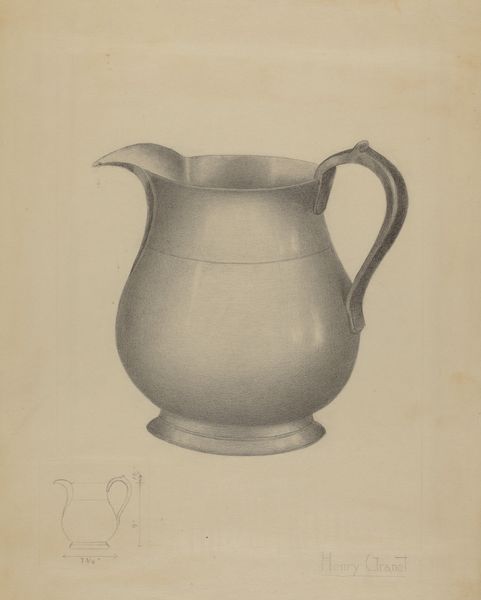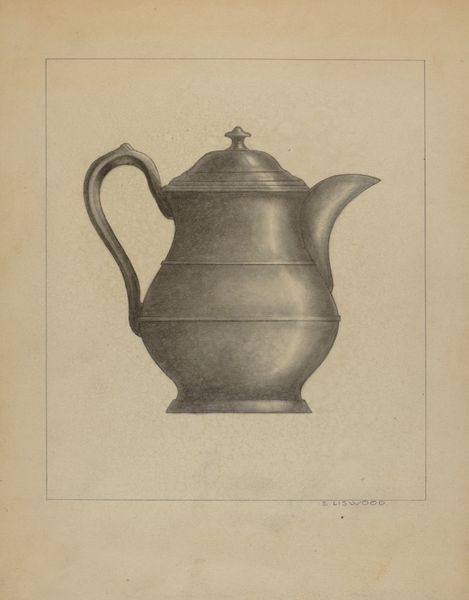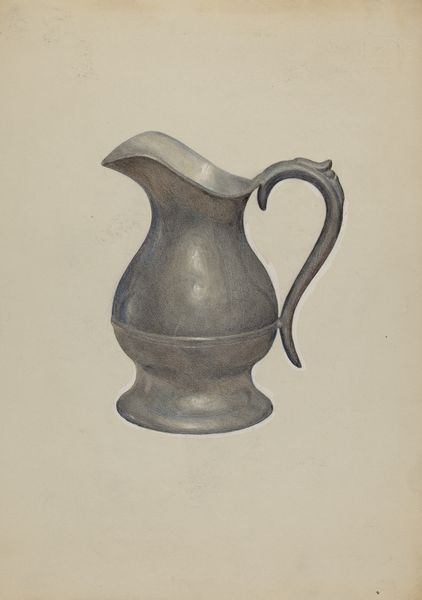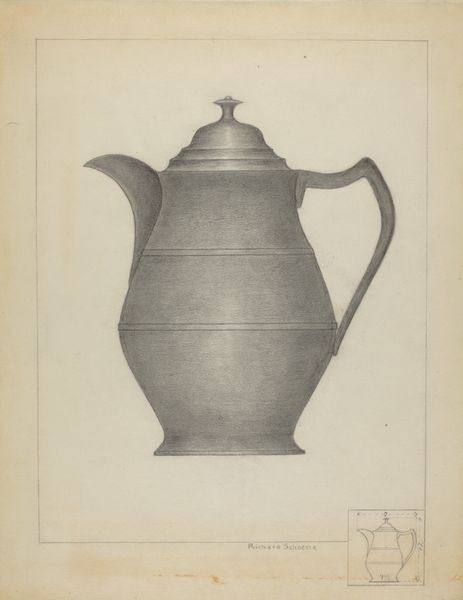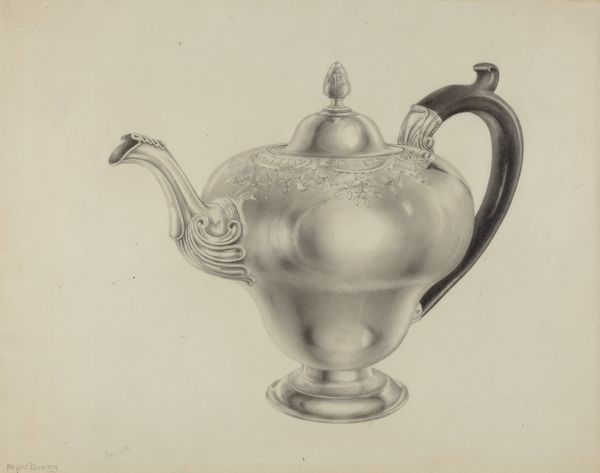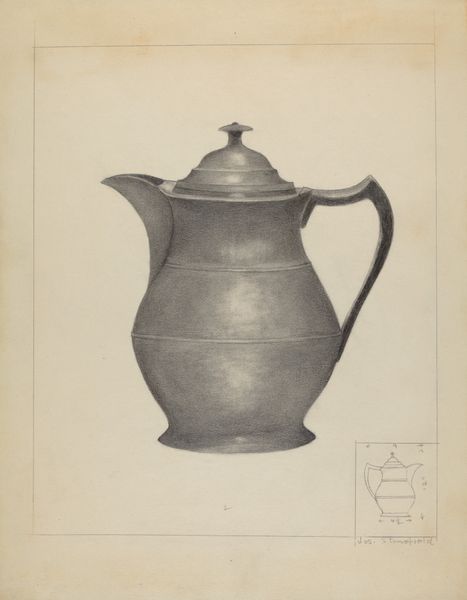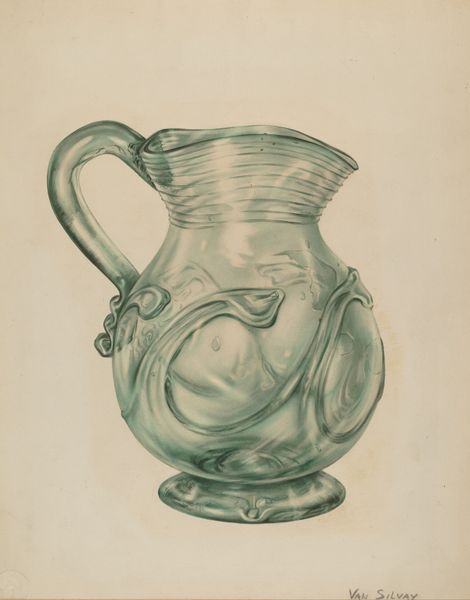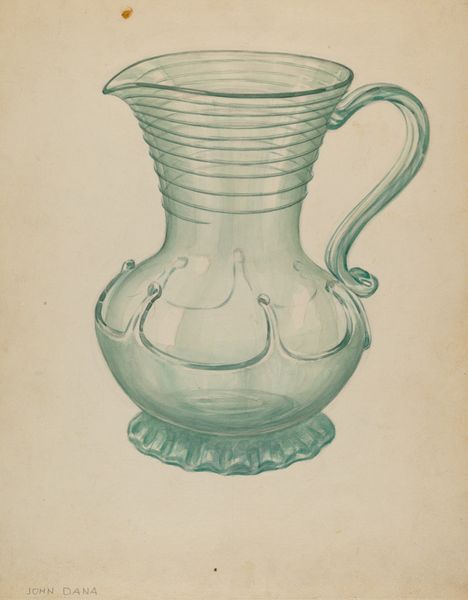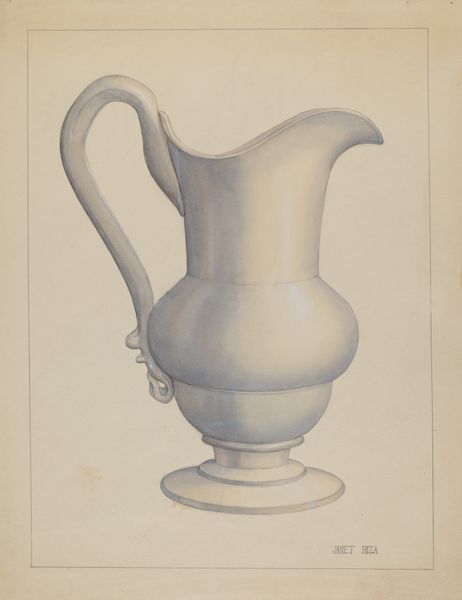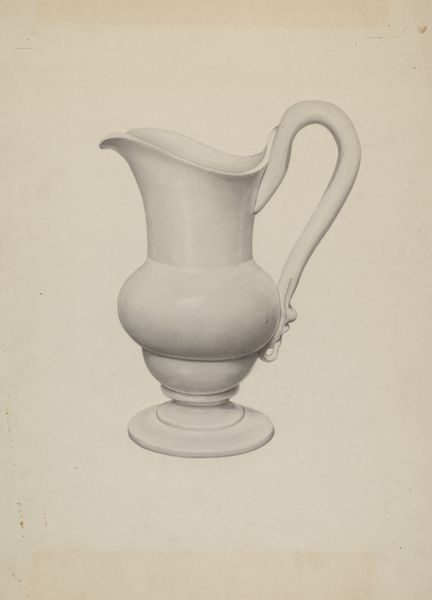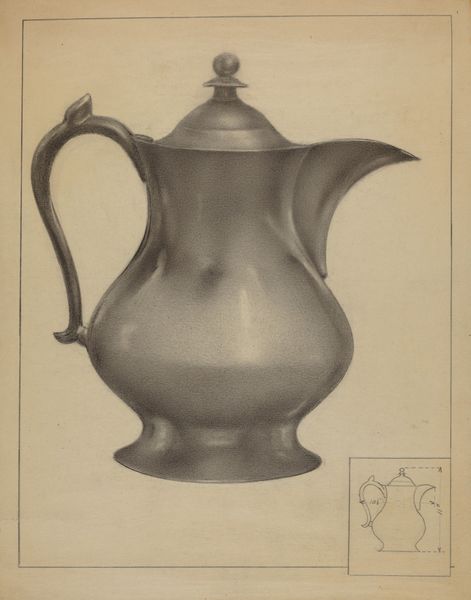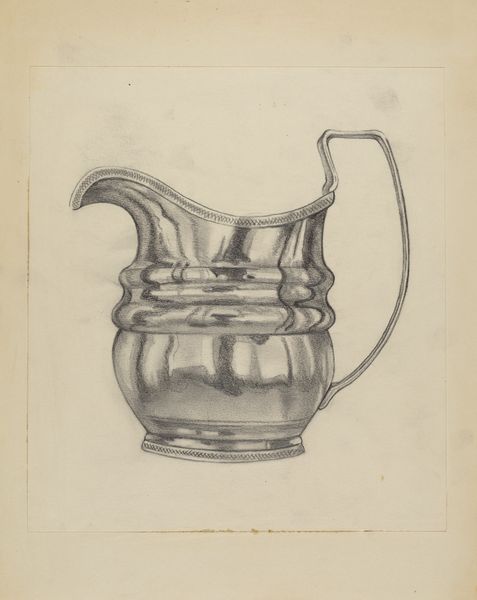
drawing, pencil
#
drawing
#
pencil drawing
#
pencil
#
realism
Dimensions: overall: 28.5 x 22.8 cm (11 1/4 x 9 in.) Original IAD Object: 3/4" high; 2 5/16" in diameter
Copyright: National Gallery of Art: CC0 1.0
Curator: Standing before us is "Pewter Pitcher," a pencil drawing realized around 1936 by Charles Cullen. Editor: It's a rather sober rendering, wouldn’t you say? The limited tonal range, the somewhat static composition—it evokes a quiet, almost contemplative mood. Curator: The pitcher, as an object, holds significant cultural weight. Think of its domestic role, the gatherings around a table. It symbolizes hospitality and the sharing of resources. The muted pewter itself hints at modesty, functionality over ostentation. Editor: Function certainly dictates form here. The curve of the body flows seamlessly into the spout, mirrored by the elegant arc of the handle. Observe how Cullen modulates the pencil strokes, suggesting the subtle play of light on the metal's surface. Curator: Pewter, although a commonplace material, connects us to earlier times, doesn't it? It reminds me of colonial America, or even medieval taverns. The object itself becomes a time capsule. I’d also note that it invites conversation about how common objects are given new meaning through art, elevated through contemplation. Editor: Precisely. The composition has a distinct asymmetry. The handle's sharp edges juxtapose with the body’s smooth curves. This controlled tension introduces a subtle visual dynamism. Do you agree? Curator: Yes, and think, too, how the choice of pencil itself imbues the work with an immediacy, a sense of the artist's hand. There’s no flamboyant brushwork here, just careful observation rendered with humble tools. Editor: In essence, Cullen extracts an austere beauty from the mundane. He isolates an everyday vessel, stripping it bare and presenting it as an exercise in light, shadow, and form. Curator: This prompts a thought about value. We tend to regard pitchers merely for what they hold, the quenching of thirst. Here, Cullen suggests their inherent value lies in their form, their historical and social resonance. Editor: Ultimately, I believe it asks us to examine what constitutes beauty, and perhaps question our own preconceived notions of artistic subject matter.
Comments
No comments
Be the first to comment and join the conversation on the ultimate creative platform.
